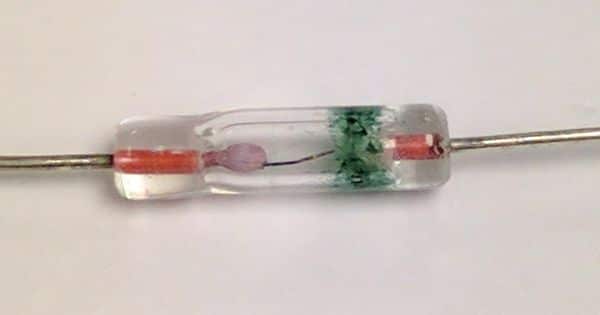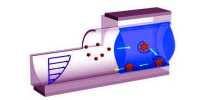A research team has developed a high-resolution imaging system based on ultra-short-wave UV radiation. It can be used to analyze internal structures with non-destructive and nanometer accuracy in semiconductors.
Images offer information-what we can see in our own eyes helps us to understand. Constantly widening the field of vision to dimensions that are first obscured from the human eye, moves research forward. Nowadays, increasingly powerful microscopes have enabled us to see in the cells and tissues of living organisms, in the world of microorganisms and inanimate natures.
A research team has developed a high-resolution imaging method based on extreme short-wave UV light. It can be used to examine internal structures in semiconductors non-destructively, and with nanometer precision.
Yet even the finest microscopes have their drawbacks. “To be able to observe structures and processes down to the nanoscale level and below, we need new methods and technologies,” says Dr. Silvio Fuchs from the Institute of Optics and Quantum Electronics at the University of Jena. This refers in particular to technical fields such as content research or data processing. “These days, electronic components, computer chips, or circuits are becoming increasingly small,” adds Fuchs. Together with his colleagues, he has now created a system that makes it possible to view and study those small, intricate structures and even to “see inside” them without damaging them. In the current issue of the scientific journal Optica, the researchers present their method – Coherence Tomography with Extreme Ultraviolet Light (XCT for short) – and show its potential in research and application.
Light penetrates the sample and is reflected by internal structures
The imaging technique is based on optical coherence tomography (OCT) that has been developed in ophthalmology for a number of years, explains doctoral candidate Felix Wiesner, the lead author of the research. “These devices have been developed to examine the retina of the eye non-invasively, layer by layer, to create 3-dimensional images.” OCT utilizes infrared light to illuminate the retina at the ophthalmologist. The radiation is chosen in such a manner that the tissue to be studied does not absorb it too intensely and can be reflected in the inner structures. However, physicists in Jena use ultra-short-wave UV light instead of long-wave infrared light for their OCT.
“This is due to the size of the structures we want to image,” says Felix Wiesner. In order to look into semiconductor materials with structure sizes of only a few nanometres, light with a wavelength of only a few nanometres is needed.
Nonlinear optical effect generates coherent extremely short-wave UV light
The generation of such incredibly short-wave UV light (XUV) used to be a challenge and was almost feasible only in large-scale testing facilities. Jena physicists, however, produce XUV broadband in the ordinary laboratory and use what are known as high harmonics for this purpose. This is the radiation emitted by the interaction of the laser light with the medium which has a frequency several times that of the initial light. The higher the harmonic order, the shorter the wavelength. “In this way, we generate light with a wavelength of between 10 and 80 nanometres using infrared lasers,” explains Prof. Gerhard Paulus, Professor of Nonlinear Optics at Jena University. “Like the irradiated laser light, the resulting broadband XUV light is also coherent, which means that it has laser-like properties.”
In the study described in their current paper, physicists revealed the coherent XUV radiation of nanoscopic layer structures in silicon and studied the reflected light. The silicone samples contained thin films of other metals, such as titanium or platinum, at varying depths. Since these compounds have distinct reflective properties than silicone, they can be observed in the reflected radiation. The approach is so accurate that not only can the deep structure of the small samples be shown with nanometer precision, but-because of the varying reflective behavior-the chemical composition of the samples can also be calculated accurately and, above all, in a non-destructive way.
“This makes coherence tomography an interesting application for inspecting semiconductors, solar cells or multilayer optical components,” says Paulus. It may be used to monitor the consistency of such nanomaterials in the manufacturing process, to detect internal defects or chemical impurities.
















